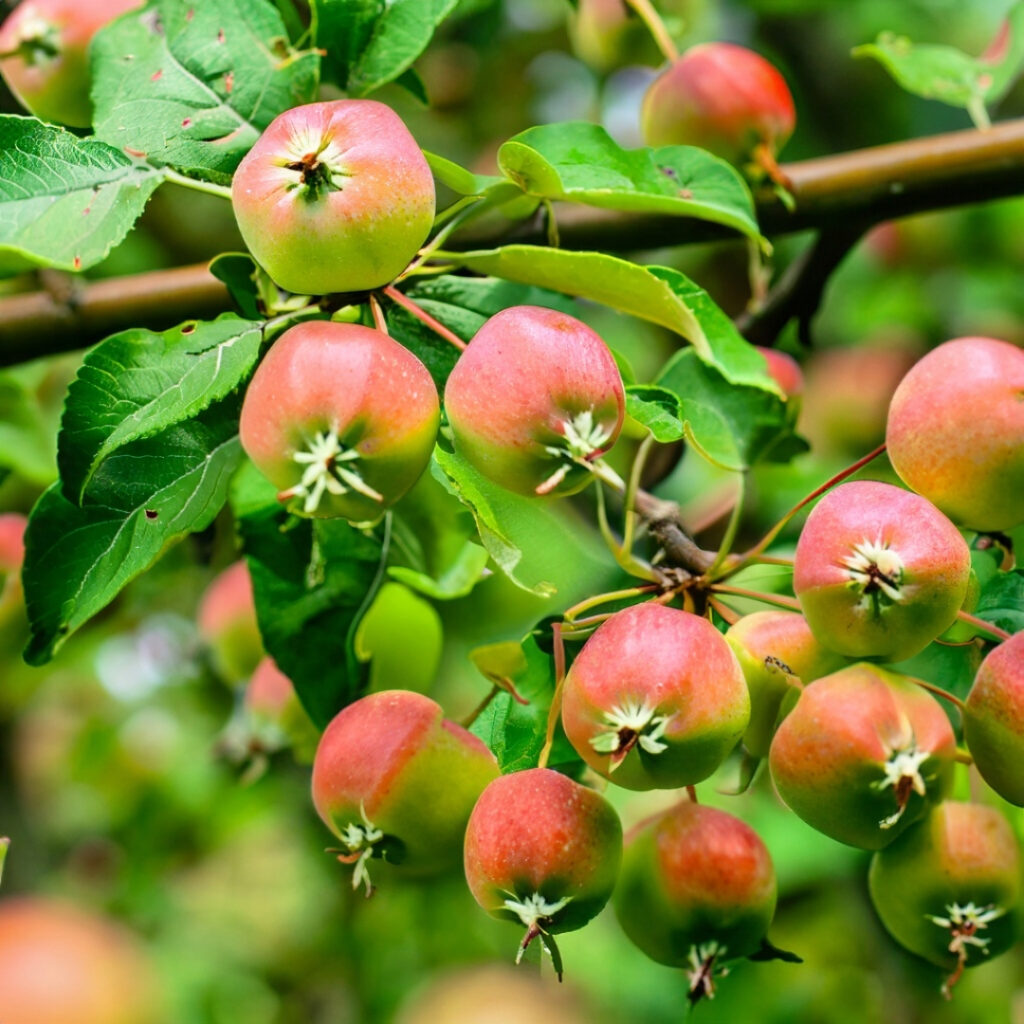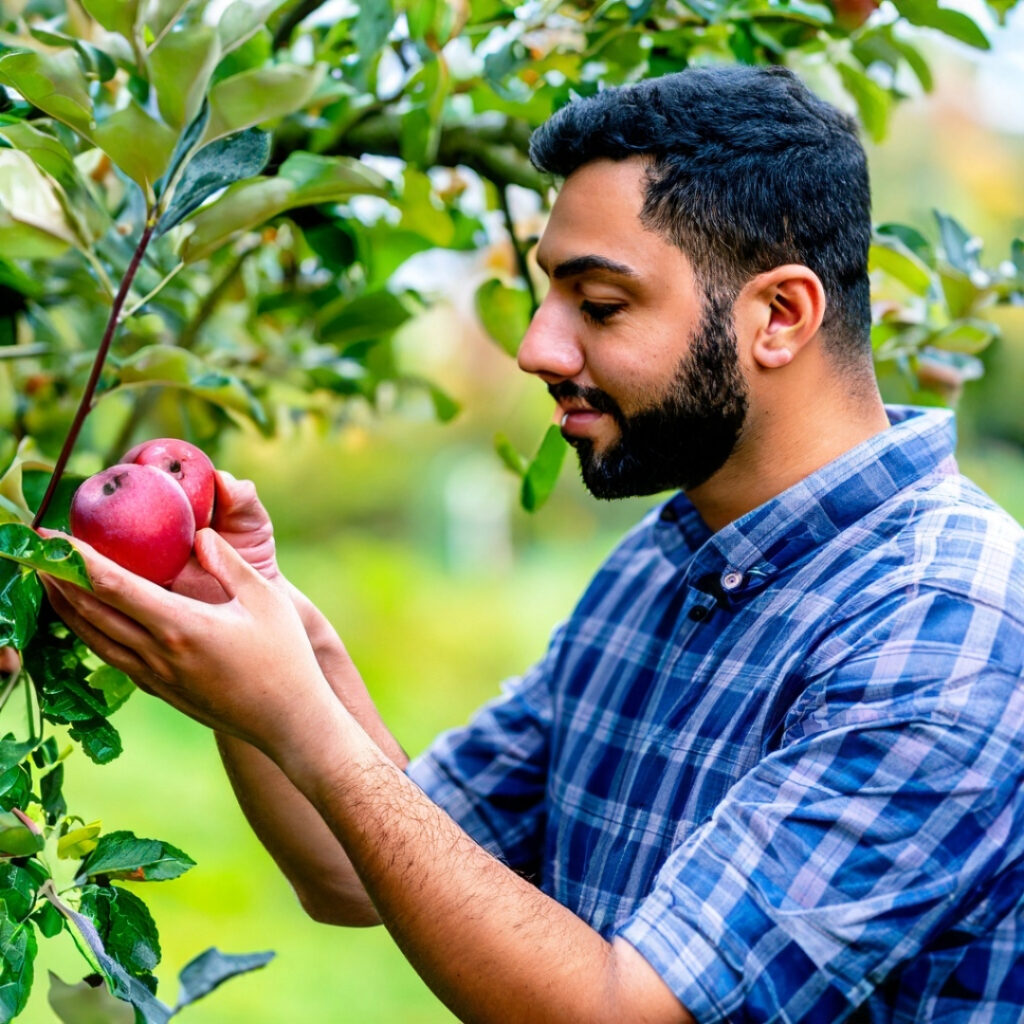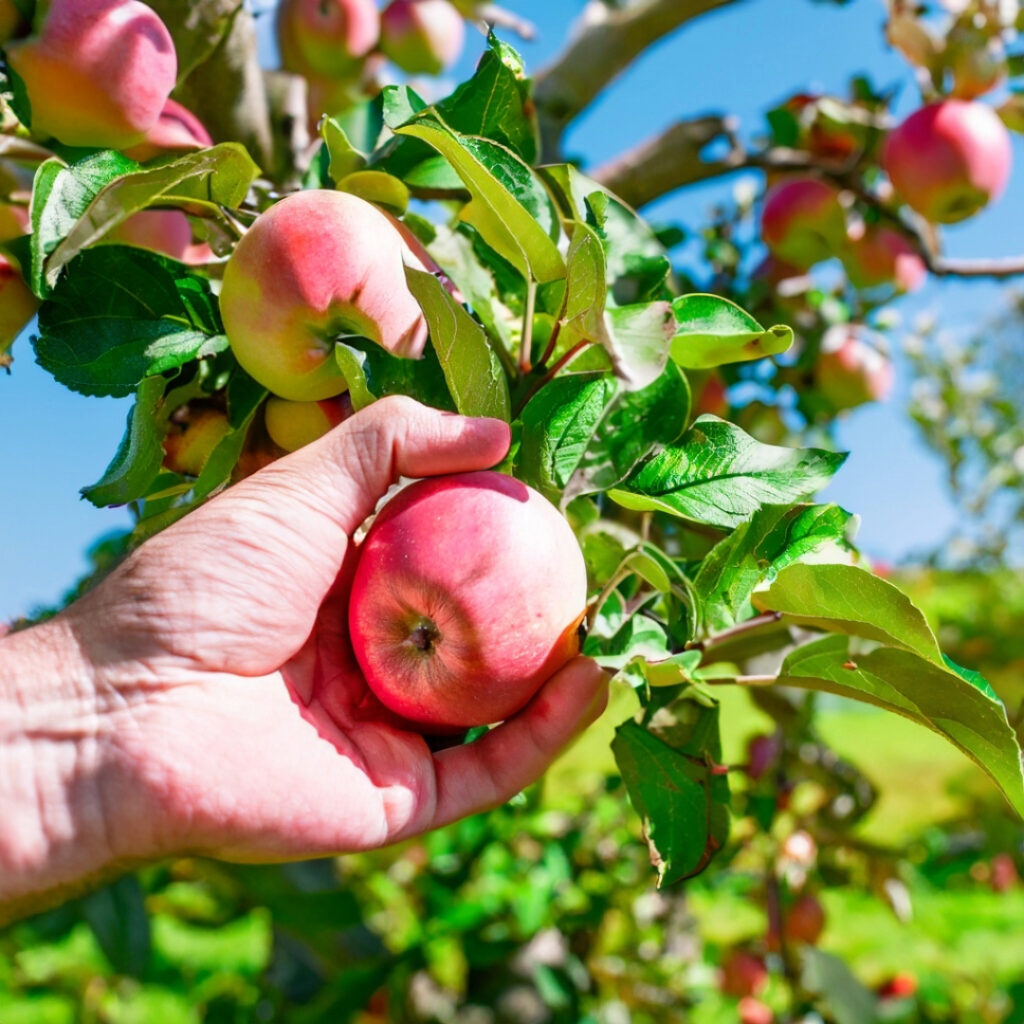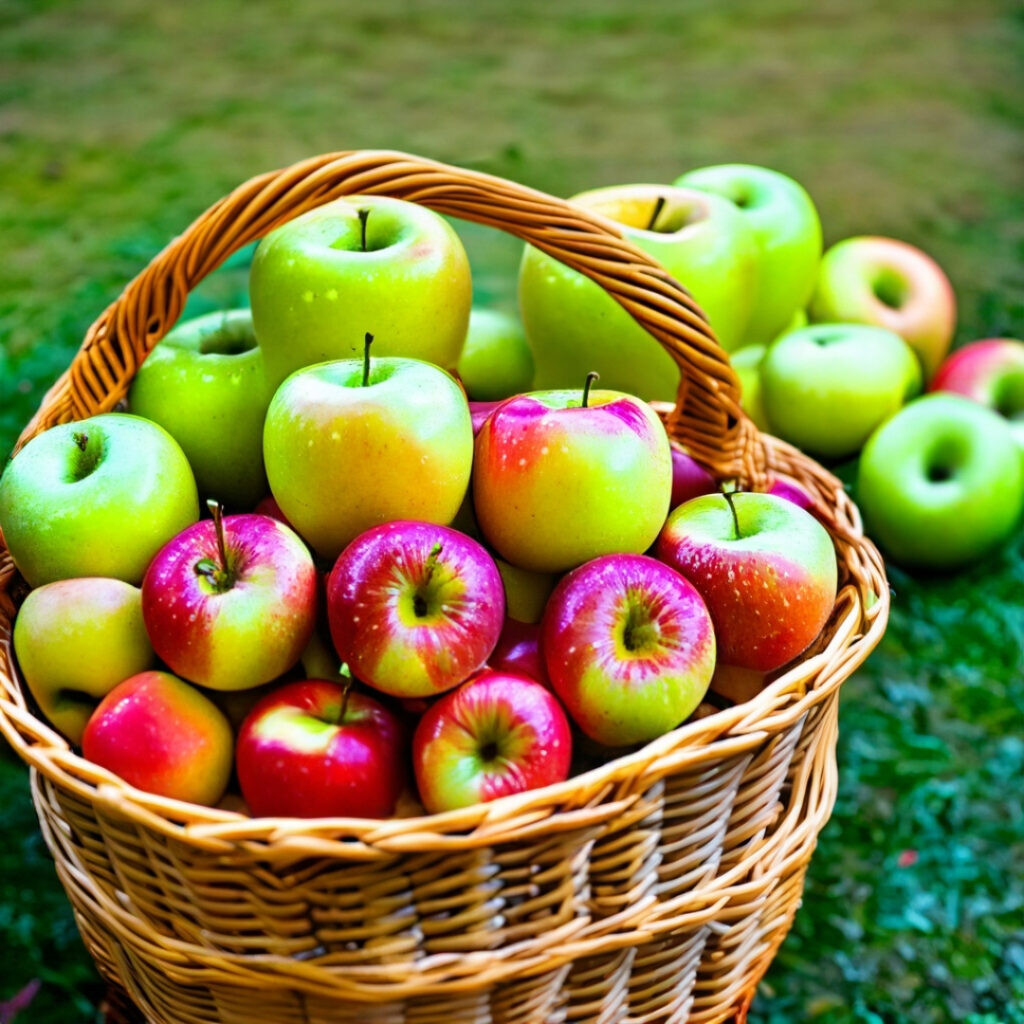How many apples should I leave on a tree? It’s a question that puzzles many garden enthusiasts and fruit growers alike. Thinning apples, or the art of selectively removing some apples from a tree, is more than a mere gardening task; it’s a science that ensures the health and productivity of the tree.
Thinning apples is the practice of selectively removing some apples from a tree to allow the remaining fruits to grow larger and healthier. Ideally, you should leave one or two fruits per flower cluster or space them about 4 to 6 inches apart. This process helps the tree expend energy on fewer apples, prevents overcrowding, and can lead to better quality fruit. Proper thinning also aids in disease control and tree maintenance.

Why is apple thinning so crucial, you ask? Let’s delve into the juicy details:
- Quality over Quantity: By thinning apples, you allow the tree to focus its energy on fewer fruits, resulting in bigger and tastier apples.
- Prevent Overburdening: Too many apples can strain the tree, leading to broken branches and poor growth in the following season.
- Disease Control: Thinning provides an opportunity to inspect the tree for early signs of disease or insect infestation.
🍏 Apple Advice: While ashes are nutrient-rich, moderation is key. Over-application can lead to nutrient imbalances, so it’s essential to strike the right balance. 🍎
Ready to embark on a fruitful journey of apple thinning? Grab your gardening gloves, and let’s get started!
Understanding Apple Thinning
Apple thinning is a horticultural practice that involves selectively removing some apples from a tree. But why would anyone want to take away those precious fruits? Let’s explore:

What is Apple Thinning?
Thinning apples, especially thinning apples by hand, is a delicate process that requires careful consideration. It’s all about balance and ensuring that the tree has just the right number of apples to support healthy growth. Here’s why it’s essential:
- Enhanced Fruit Quality: Fewer apples mean more nutrients for each fruit, resulting in juicier and more flavorful apples.
- Improved Tree Health: Overcrowding can lead to diseases and stress on the tree. Thinning helps in maintaining a healthy tree structure.
- Better Future Harvests: Proper thinning sets the stage for productive harvests in subsequent years.
Can You Have Too Many Apples on a Tree?
Yes, indeed! Having too many apples on a tree can lead to overcrowded branches, reduced sunlight, and poor air circulation. This creates a perfect environment for diseases and pests, not to mention the strain on the tree’s branches.
How Many Apples Do You Get Off a Tree?
The number of apples you get off a tree depends on various factors such as the tree’s age, variety, and care. On average, a mature apple tree can produce between 100 to 200 pounds (45 to 90 kilograms) of apples in a season.
🍏 Apple Advice: Moderation in apple thinning is key. Too few apples might lead to excessive vegetative growth, while too many can cause overcrowding. Finding the right balance is the core of successful thinning. 🍎
How to Thin Apples: A Step-by-Step Guide
Thinning apples is not just a garden chore; it’s an art that requires precision and understanding. Here’s a step-by-step guide to help you master this skill:
When to Thin Apple Trees
Timing is crucial. The best time to thin apple trees is when the fruit is about the size of a marble, typically late spring to early summer. An apple thinning chart can be a handy reference for different apple varieties.
Step-by-Step Guide to Thinning Apples
- Select the Right Tools: Use sharp pruning shears or scissors for clean cuts.
- Inspect the Tree: Look for diseased or damaged fruits and remove them first.
- Choose the Best Apples: Leave one or two healthy apples per cluster, spaced 4 to 6 inches (10 to 15 centimeters) apart.
- Be Gentle: Handle the apples with care to avoid bruising.
- Monitor and Adjust: Keep an eye on the tree’s growth and adjust thinning as needed throughout the season.
How Much Pruning Can We Do and Still Get Apples?
Pruning and thinning are complementary practices. You can prune up to one-third of the tree’s branches annually without affecting the apple yield. Pruning helps shape the tree and improve air circulation, while thinning focuses on the fruit itself.
Can You Eat the Small Apples on a Tree?
Yes, small apples from thinning can be eaten or used in cooking. They may lack the size, but they often pack a flavorful punch. Think of them as bite-sized delights!
🍏 Apple Advice: Striking the right balance in thinning is like finding the perfect apple pie recipe. Too much or too little can spoil the dish. Trust your instincts and the tree’s natural growth pattern. 🍎
Common Mistakes and How to Avoid Them
Apple thinning is a delicate task, and even seasoned gardeners can make mistakes. Let’s explore some common pitfalls and how to steer clear of them:
Apples Too Heavy for Tree
Overloaded branches can lead to breakage and poor fruit quality. To avoid this:
- Thin apples early in the season.
- Support heavy branches with stakes or ties.
- Monitor the tree regularly for signs of stress.

How to Get Bigger Apples on My Tree
Want bigger, juicier apples? Here’s how:
- Thin apples to one per cluster.
- Provide consistent watering.
- Use balanced fertilizers (avoid excess nitrogen).
Why Are My Apples So Small on My Tree?
Small apples can result from overcrowding, poor nutrition, or inadequate sunlight. Thin the apples, ensure proper fertilization, and prune any obstructing branches to allow sunlight to reach the fruits.
Why Are My Apples So Big?
Excessively large apples may lack flavor and texture. This can be due to over-fertilization or under-thinning. Follow proper thinning guidelines and use fertilizers judiciously to maintain size and quality.
🍏 Apple Advice: Avoiding nutrient imbalances is like baking the perfect apple crumble. Too much or too little of an ingredient can ruin the dish. Test your soil and follow fertilization guidelines for a fruitful harvest. 🍎
Sustainable Practices in Apple Thinning
Thinning apples doesn’t have to be a wasteful process. With a little creativity and care, you can turn this gardening task into an eco-friendly endeavor. Let’s explore some sustainable practices:
What to Do with Thinned Apples
- Composting: Turn thinned apples into nutrient-rich compost for your garden.
- Animal Feed: Offer thinned apples to chickens or other farm animals.
- Culinary Creations: Use slightly underripe apples in cooking or making jams.
How Many Apples Per Cluster
Thinning to one or two apples per cluster (4 to 6 inches apart) promotes healthy growth without wasting too many fruits. It’s a balance between quality and conservation.

What Happens If You Don’t Pick Up Apples?
Leaving fallen apples on the ground can attract pests and diseases. Collecting and composting them helps maintain a healthy orchard environment.
How Long Do Apples Last Once Picked?
Thinned apples can last up to a week at room temperature (20°C/68°F) or several weeks in the refrigerator (4°C/39°F). Use them promptly to minimize waste.
🍏 Apple Advice: Utilizing thinned apples effectively is like turning garden “waste” into gold. From compost to culinary delights, every apple has a purpose. Be creative and eco-conscious! 🍎
Conclusion
Apple thinning is more than just a gardening task; it’s an art and a science that leads to healthier trees and tastier apples. Here’s a quick recap of what we’ve learned:
- Understanding Apple Thinning: It’s essential for quality and tree health.
- How to Thin Apples: Follow a step-by-step guide, including when to thin and using an apple thinning chart.
- Common Mistakes: Avoid issues like apples being too heavy for the tree.
- Sustainable Practices: Embrace eco-friendly methods and utilize thinned apples.
With these insights, you’re well-equipped to embark on your apple thinning journey. Whether you’re a seasoned gardener or just starting, the rewards of well-thinned apple trees are waiting for you. Happy thinning!
